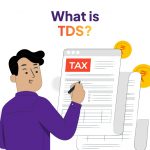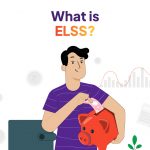FASTag
The Ministry of Road Transport and Highway first adopted the FASTag Radio Frequency Identification Technology (RFID) in October 2017. This action was adopted with a number of inconveniences for both individual drivers and the country at large in mind.
According to data from a Times of India report, toll booth plazas in India saw an annual leakage of almost Rs. 12000 crore. Fuel waste and human resource depletion at toll plazas are two of the major contributors to such loss.
While the financial loss is the main issue, there is another consequence that goes unnoticed: air pollution. When it comes to air pollution, India is among the worst nations.
In this aspect, toll plazas are a major factor in India’s rising air pollution levels. Therefore, reducing such levels was one of the goals of introducing FASTag in India.
Are you curious? Learn more about it now.
How does it work?
Like other radio frequency identification (RFID) systems, FASTag operates in a similar way. A reader at the toll booth can scan the RFID-enabled sticker that is mounted to the windshield of a car to wirelessly and automatically process the payment.
You will not need to pull over to pay the toll cost with cash when you pass a toll plaza that accepts FASTag. Instead, you can simply keep driving, and the toll will be paid without your intervention.
All new automobiles sold after December 1, 2017, as well as all vehicles beginning in 2021, must have the tags in order to promote digital payments and relieve traffic at toll booths.
Over 34 lakh FASTags were distributed in 2018, and as of December 31, 2019, more than 11.5 million FASTag cards had been distributed, according to the Ministry of Road Transport and Highways.
Is getting a FASTag card mandatory?
The National Highways Authority of India (NHAI) has decided to require all four-wheelers to adopt FASTags as of February 15, 2021. (The original deadline was January 1, 2021; this date was moved up).
What Will Happen If You Do Not Get a FASTag Card for Your Vehicle?
You must pay double the toll cost in cash to pass through a FASTag-enabled toll booth if your vehicle does not have a FASTag or your card does not have enough money on it.
Additionally, if you want your car to be covered by a new third-party motor insurance coverage, it must have a valid FASTag as of April 1, 2021.
More than 540 toll plazas in India have the requisite equipment for scanning FASTag cards, according to the National Highway Authority of India (NHAI), the regulatory authority in charge of regulating the FASTag card distribution and installation of FASTag compliant toll booths.
How to get a FASTag card?
22 banks have installed more than 28000 point-of-sale terminals around India, along with NHAI plazas, common service centers, gas stations, and transportation hubs.
You can obtain your FASTag card from any bank’s website. It is not necessary for you to already have an account with the issuing bank.
These cards are also available online through other digital channels, like Paytm and Amazon.
What documents are needed?
You would need to provide your KYC documents—identity evidence and residency proof—in order to apply for a FASTag card. The KYC documents that you must submit differ depending on the bank.
You must also include your passport-size photo and the registration certificate (RC) for your car. Whether you obtain the card offline or online, you must present these documents.
What is the fees for availing the FASTag card?
The availability of FASTags at toll booths, Regional Transport Offices (RTOs), and transportation hubs would be free of charge beginning on November 22nd, according to a November announcement by the Minister of Road Transport and Highways.
Unfortunately, you might have missed the deadline because it was set for the first of December 2019.
However, regardless of the issuer, you will now need to pay a fee to obtain your FASTag card.
The cost of a FASTag card is often divided into three parts:
Issue charge.
security deposit repayable.
Minimum balance required for your digital wallet to be credited
The authorized entity from whom you are requesting it will determine the charge. The highest issuance fee that these financial institutions may charge you is capped by the Indian government at Rs. 200. The issuing fee is an upfront cost.
Additional links:
We hope you enjoyed reading this article. Do check out our other blogs and articles as well.
https://fatakpay.com/blog/different-types-of-investments/
https://www.linkedin.com/pulse/rise-fintech-its-impact-traditional-financial-institutions-fatakpay/
https://www.linkedin.com/pulse/budget-2023-simplified-fatakpay/
https://fatakpay.com/blog/need-for-financial-security-in-todays-inflation-recession-economy/
About FatakPay:
FatakPay provides virtual credit facilities for all. It’s available on your phone and caters to your everyday needs in both online and offline formats. Payments are done seamlessly through UPI/QR codes. The solution provides an almost zero cost, free, quick, transparent and secure way to transact in a multilingual format with a Scan Now, Pay Later facility and easy repayment options.
Link to FatakPay App: https://play.google.com/store/apps/details?id=com.fatakpay
Link to the Website: https://fatakpay.com/







